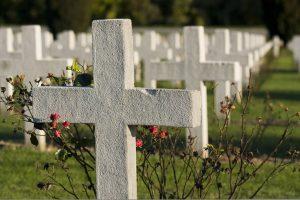 “On the battlefield of Verdun I stand.
“On the battlefield of Verdun I stand.
Half a million, young as I, are buried here.
Where are they now?” – excerpt from Verdun and You, a poem by German battle survivor William Hermanns
Marshal Ferdinand Foch, France’s Supreme Commander of Allied Forces in WW1, is said to have once remarked that the training of a Major General requires about 15,000 dead soldiers. In 1916, at the infamous battle of Verdun, more than 20 times that number of men died on both sides of the trenches. If ever there was a place to train generals, Verdun must have been it.
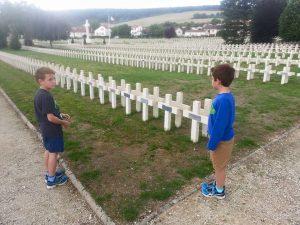
A new generation is introduced to the destruction of Verdun at one of many cemeteries in Verdun.
Verdun is far more than a site for the history or military buff, far more than a memorial for fallen soldiers and far more yet than a place of commemoration for the children of the men who fought here. It is a reflection of who we are at our worst. It is the human shame that cannot be explained. The tragedy of Verdun can only be experienced by visiting here. In short, Verdun is a place every person must visit to understand the horrors of the “war of attrition.”
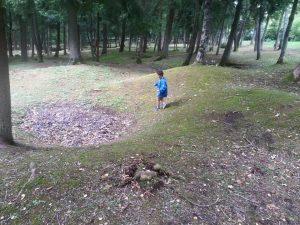
Remnants of Fleury, one of nine lost villages of Verdun. The village disappears in a mass of bomb craters.
The battle site is enormous, to visit all of it requires an entire day. Verdun had been deliberately chosen as a point of attack by Germany in order to bleed the French army, drain it of its fighting resources and ultimately grind it into submission. Highlights include a visit to the ruins of Fort Douaumond, one of the key fortifications that had been built to defend the city of Verdun. One of the most remarkable impressions left at the battle of Verdun are the thousands upon thousands of bomb craters that are still clearly visible in the ground. At places, as far as the eye can, the ground has been pounded into a moon-like landscape. Perhaps the clearest physical evidence of the sheer scale of bombardment that occurred here are the nine lost villages of Verdun (Beaumont, Bezonvaux, Cumières, Douaumont, Fleury, Haumont, Louvemont, Ornes, and Vaux.) They are today completely wiped off the map, a relic lost to history. Parts of the village of Fleury have been marked up, allowing visitors to gain a vague sense of what life may have been like a century ago in this typical French country village. Dig the ground lightly and just below the surface, tiles or stones from old edifices emerge. A bakery here, the church there, someone’s private home down yonder – all witness to the ruthless savagery of thousands of howitzers. Strolling through this bombed and pockmarked remnant of what was once a town shocks the conscience. Can humans really create such havoc?
-

- The ossuary and memorial of Verdun
-
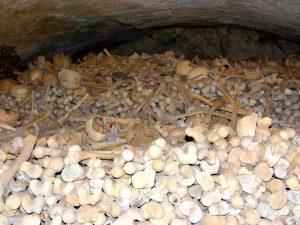
- Bones of 130,000 soldiers are stored within the ossuary
Nothing however, leaves such a powerful and appalling impact upon the visitor as a visit to the ossuary, the final resting place of over 130,000 unidentified soldiers on both sides of the battle. Ironic that these men should forever rest together in death when they hated one another so harshly in life. The enormous piles of bones that have been placed here can be viewed through small window portals, providing a powerful perspective on what “130,000” really means in human terms. Steps lead to the top of the tower, offering a lovely 360 degree view of the forests and hills that surround greater Verdun. From here, the scale of the battle field, as well as the masses of graves that dot the region, become all too clear.
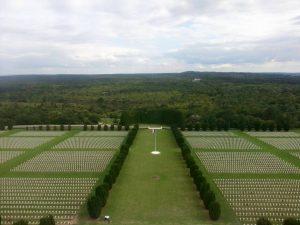
View from the top of the Verdun memorial



